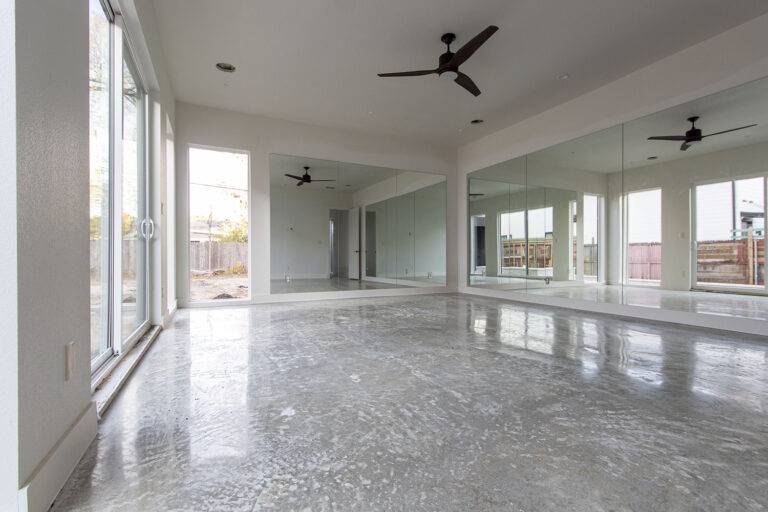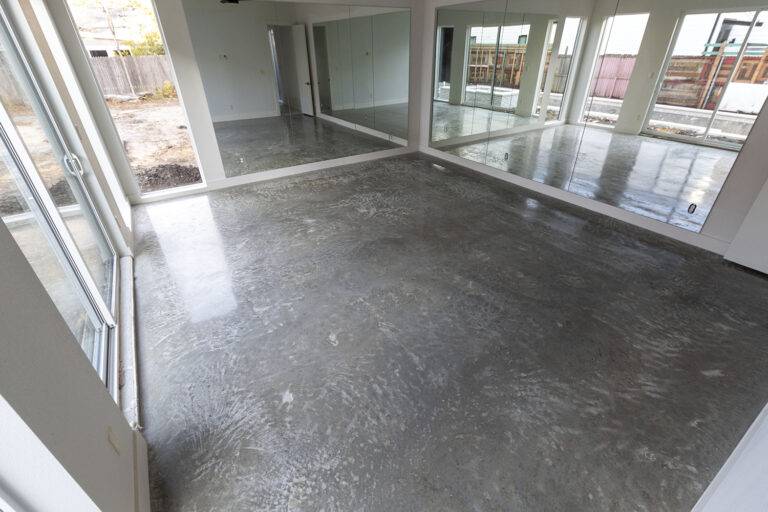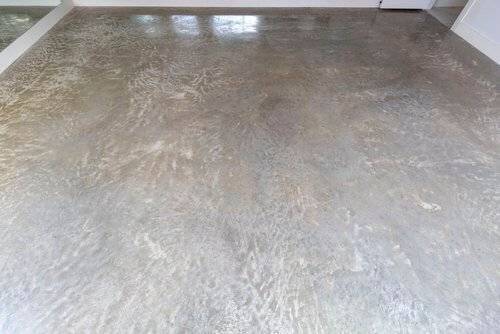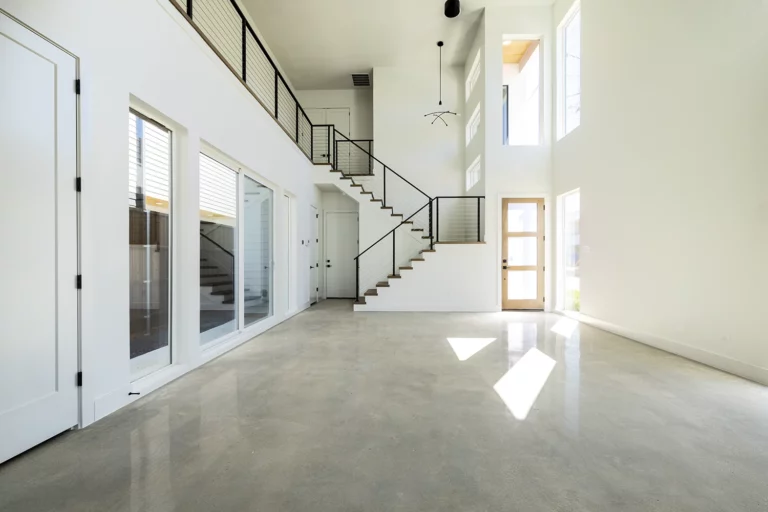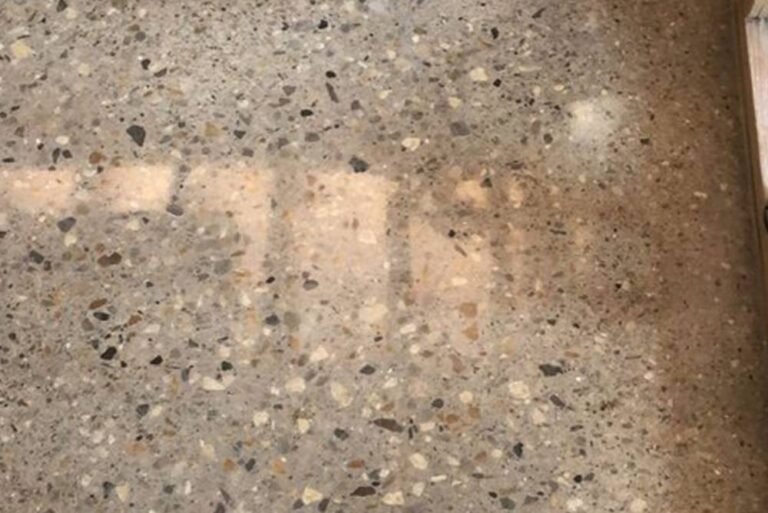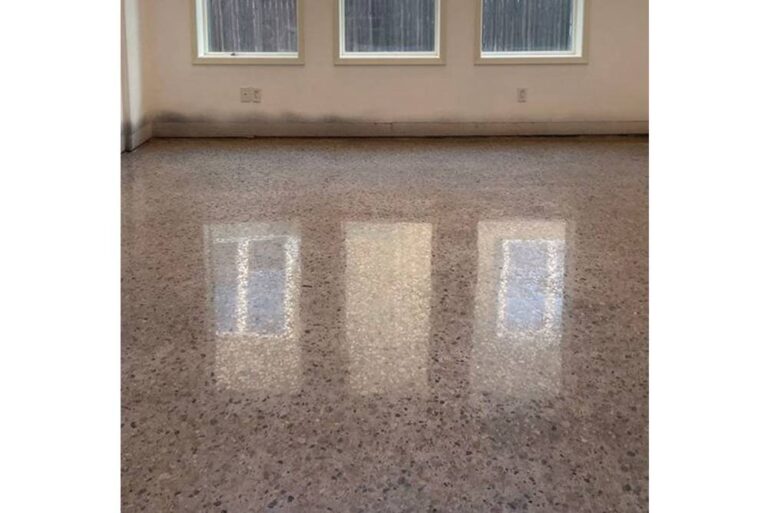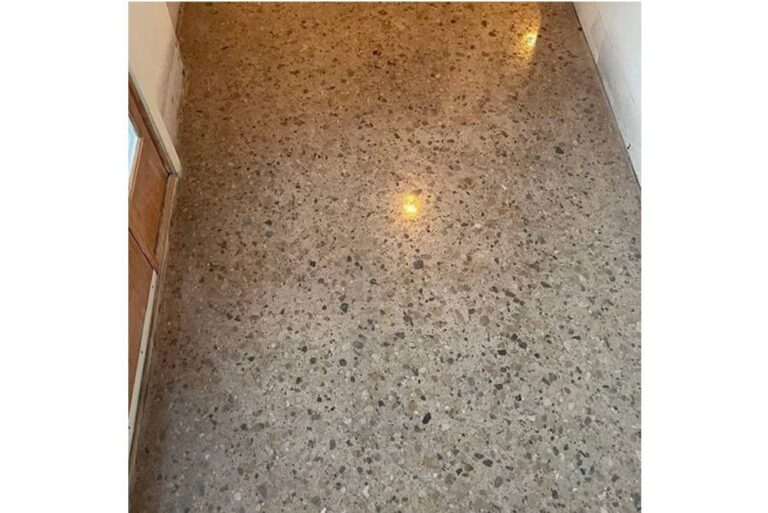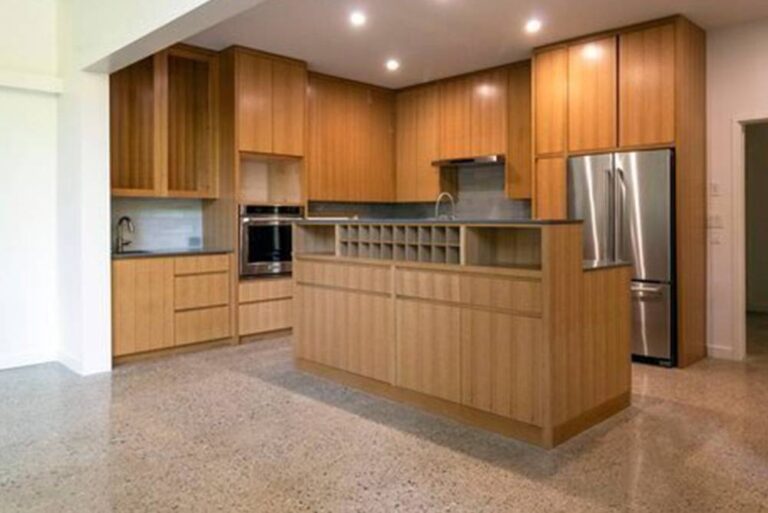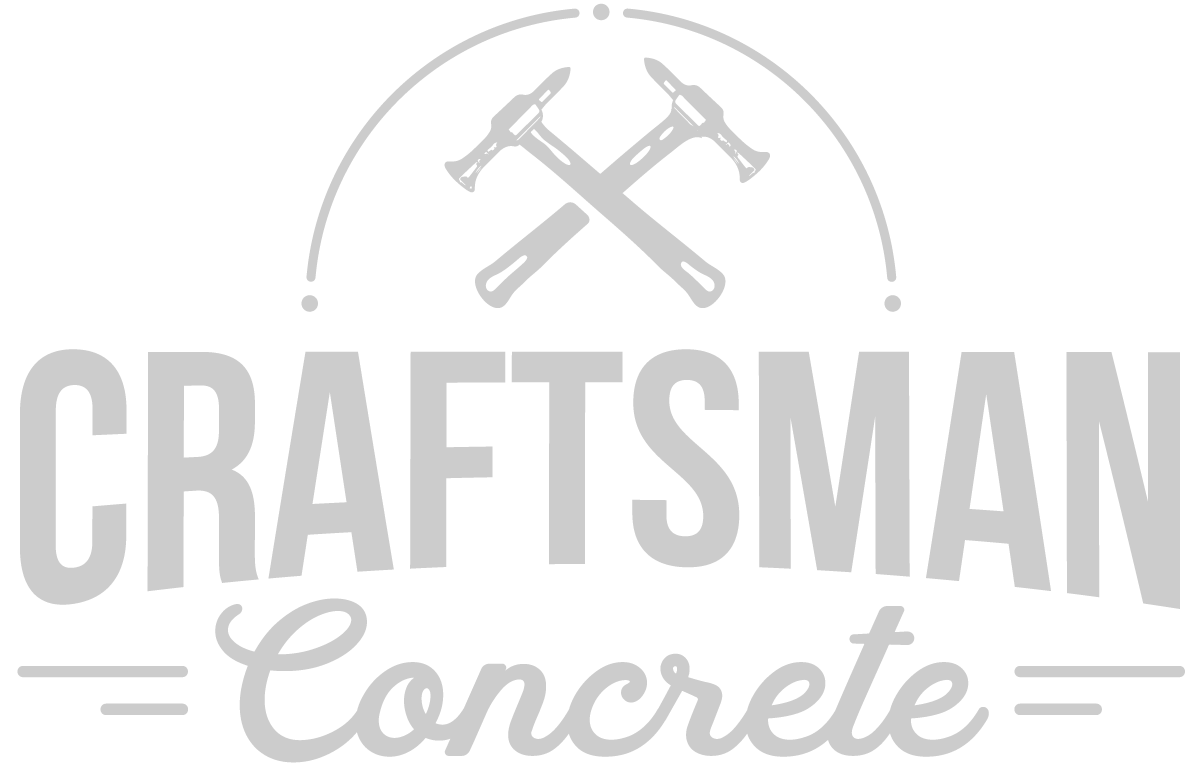WHEN CONCRETE IS POLISHED, CONCRETE MATERIAL IS REMOVED FROM THE SLAB’S SURFACE EXPOSING ROCK AND SAND AGGREGATE.
THE AMOUNT OF CONCRETE REMOVED WILL DICTATE THE SIZE OF THE EXPOSED AGGREGATE. THIS ARTICLE EXPLAINS THE DIFFERENT LEVELS OF AGGREGATE EXPOSURE IN DETAIL.
Cream Polished Concrete
On a cream polished concrete floor, the top layer of the concrete is polished. This layer of concrete is made up of cement paste and very fine sand aggregates. With this installation, the goal is generally to preserve the marbled-looking surface that was left by the power trowel during concrete finishing. Therefore, the goal of this installation is to remove as little surface material as possible.
Because a cream polished concrete floor is not heavily ground, a high-quality concrete pour is essential to achieving a great-looking finished floor. During the concrete pour, we recommend concrete contractors use plastic power trowel blades to finish the floor. Further, the final power trowel pass (or two) should utilize plastic pans under the power trowel. Too much friction from repetitively troweling with steel blades will darken this floor, making them appear black.
It’s also important that all formwork is built so that the power trowel can hang off of the side of the slab wherever possible. Hand-troweling concrete slab edges can create an ununiform finish. A well-poured and finished concrete slab will polish to an extremely high gloss and take colored pigments with ease. With this installation. preparation is the key to achieving a great-looking polished surface.
Finally, it’s worth noting that this install can only be used on new concrete pours. Renovations and existing concrete will be too worn or damaged for a cream polished concrete finish.
Salt and Pepper Exposed Polished Concrete
On a salt and pepper exposed polished concrete floor, most of the concrete floor surface cream is ground off—creating fine aggregate exposure. This is the install commonly seen at retailers such as Home Depot and Costco and is the most common of the polished concrete aggregate exposure levels.
In theory, the surface removal and aggregate exposure on salt and pepper polished floors make the installation more durable in very high traffic use cases. In practice, this increased durability may be overstated. On a typical floor, 1/16th of an inch of surface must be removed before we can achieve consistent fine aggregate exposure.
Because the surface cream is removed, markings left by the power trowel will be less noticeable. That makes this installation ideal for slabs with excessive markings left by steel power trowel blades. As the initial concrete grind removes all surface contaminants, this is the installation most commonly used where damage from a previous floor covering must be addressed. In most cases, these floors can be made very reflective during the concrete polishing process.
Exposed Aggregate Polished Concrete Floors
On an exposed aggregate polished concrete floor, up to 1/4th of an inch of surface concrete is removed, leaving medium aggregate and large aggregate exposure. On this install, the goal is consistent aggregate exposure. To achieve this, the slab must be carefully and repetitively ground with very aggressive diamond tools. Repetition is required, as some areas will need more grinding than others to properly expose the coarse aggregate.
When this installation is chosen for new construction, specific aggregate sizes and colors may be specified to achieve a specific aesthetic. Often lots of medium aggregate sizes are added to the concrete mix, creating a finished surface similar to terrazzo. Medium aggregate will fit together more tightly in the slab, leaving a concrete surface with less exposed cement paste. Cement paste is typically very porous in this type of installation. so a tight medium aggregate exposure typically creates the best-looking floor.
Because surface removal tends to expose concrete porosity, an epoxy or cement-based grout coat is generally used during the concrete polishing phase of the project. Troweled onto the floor, their purpose is to increase clarity and reflectivity during the concrete polishing process. Grout coats are generally color-matched to the concrete so that their use is not apparent in the finished floor.
Looking for More Information about Residential Polished Concrete Floors?
See our polished concrete page for links to articles about the types of polished concrete floors, galleries, and other content. As always, give us a call for a free consultation.
